
PREMIER League, SEPTEMBER 28 2025
Woltemade (34)
Merino (84)
Gabriel (90+6)
Arsenal closed the gap on early pacesetters Liverpool with this late comeback win at Newcastle. Gabriel scored the winner from a Martin Ødegaard corner as the visitors again demonstrated their potency from set-pieces. The Gunners had been staring down the barrel of defeat minutes earlier, only for substitute Mikel Merino to equalise in the 84th minute from a Declan Rice corner. Then Gabriel produced a moment that Arsenal are hoping is a sign that this season will produce a long-awaited title.
Newcastle had gone into the break 1-0 to the good, thanks to a headed goal of their own courtesy of Nick Woltemade. But given their added-time loss to Liverpool at St James’ Park last month, Eddie Howe’s team knew that nothing would be decided until the final whistle. So it proved. After Liverpool had lost with the last kick of their game at Crystal Palace, Arsenal left the northeast two points off top spot and buoyed for the challenges to come.
How the managers saw it
“They looked more of a goal threat than us,” observed Eddie Howe. “On that side, you could say yes [they deserved to win]. But I thought defeat was harsh on us after everything we gave the game.”
“We can play various types of games and the team still can deliver and win it in a convincing way,” said Mikel Arteta. “We added today so much quality from various ways to generate the amount of chances that we did. At the end we found a way to win it when I think we fully deserve to win the game.”
 133412218739271023112363336104114719
1334122187392710231123633361041147197/3
SHOTS / ON TARGET
18/8
41%
POSSESSION
59%
20
ATTACKS INTO AREA
36
0.75
EXPECTED GOALS (XG)
1.95
Attacking the wide areas
Both teams attacked using the wide areas, with their full-backs joining from deep to support the receiving wingers. For Arsenal this was mostly on the right side of their 4-2-3-1 shape. Jurriën Timber joined Bukayo Saka in attacking Dan Burn, avoiding a congested centre caused by Newcastle’s narrow 4-5-1. Anthony Gordon worked back to defend for Newcastle on this side, which limited his counter-attacking threat in the spaces vacated by Timber. By contrast, on Arsenal’s left Leandro Trossard attacked without consistent support from Riccardo Calafiori. Elsewhere, Eberechi Eze played as a number 10 behind centre-forward Viktor Gyökeres (below). In the first half he was only able to work attempts on goal from the edge of the box in the second phase of Arsenal’s attacks.
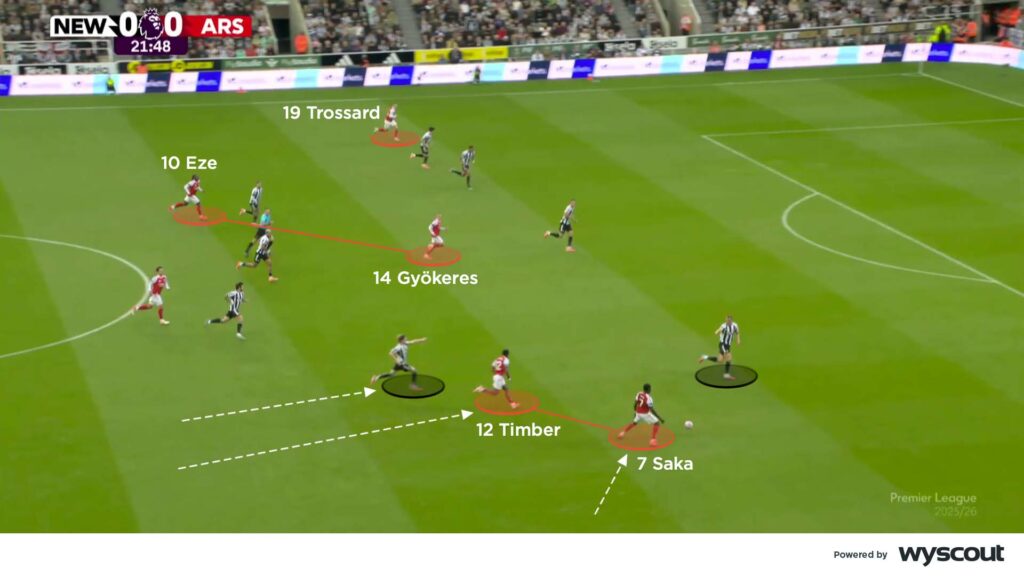
Newcastle produced similar attacking patterns in the final third, with Tino Livramento moving high from right-back to support Jacob Murphy. The latter often attacked from a narrowed position, as he also looked to press inwards on to Arsenal’s centre-backs when Newcastle were defending high up the pitch. The 6ft 6ins Woltemade was an obvious crossing target, and the equally tall Burn occasionally got forward from left-back to add an aerial presence. The England international didn’t get high to overlap and cross – instead he attacked the box. Newcastle tried to build from their right, with the midfield passing across to that side quickly where possible, to supply crosses for Woltemade and Burn to attack (below).
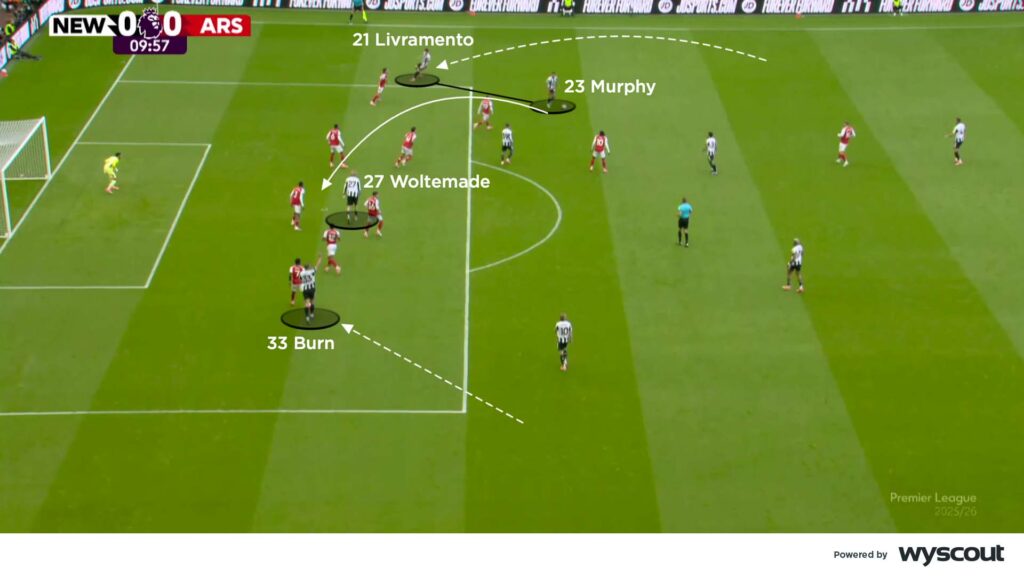
Both centre-forwards, Gyökeres and Woltemade, exploited the wide areas to help their teams transition into attack. Full-back advances left wide spaces vacant for these forwards to widen and receive, linking into runners. Gyökeres often dragged his centre-back marker out, then combined with the inward-running Saka (below). Arsenal then worked the ball quickly across the pitch, with Newcastle’s back line unable to readjust. The Gunners’ best chance came from such a move, efficiently working the ball across to Trossard, who hit the post.
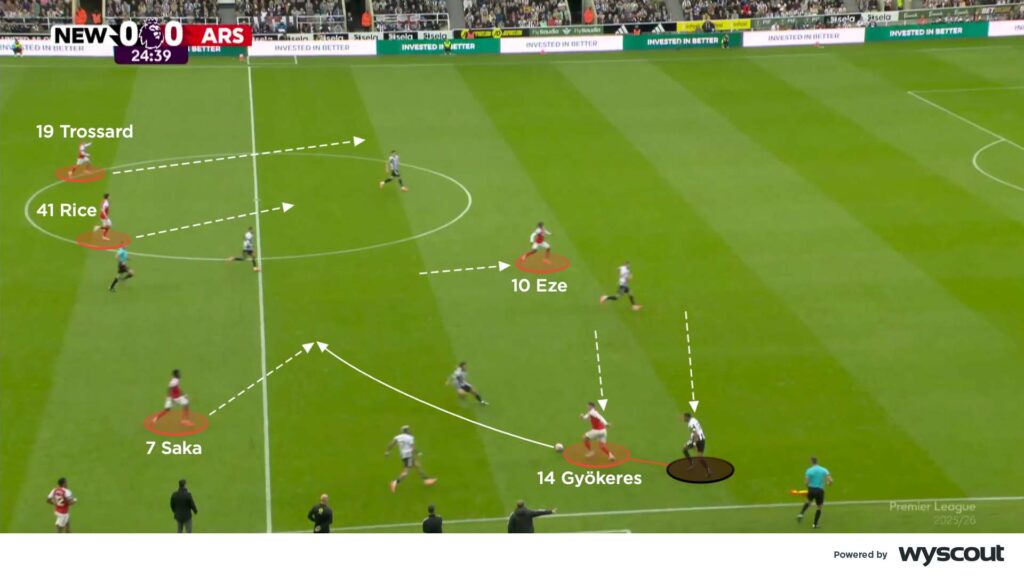
Newcastle also looked to drag an opposition centre-back wide to exploit the resulting space. Woltemade mainly linked from their left side, looking to receive in the space made available by Timber advancing. Newcastle had more central-midfield runners than Arsenal, largely due to their 4-5-1/4-3-3 shape allowing their number eights to make forward runs and link off their centre-forward. Sandro Tonali, Joelinton and Bruno Guimarães all made runs from midfield or were positioned high, in place of the widening Woltemade (below). But it was a cross from a short corner that found Woltemade in the box to give Newcastle the lead.
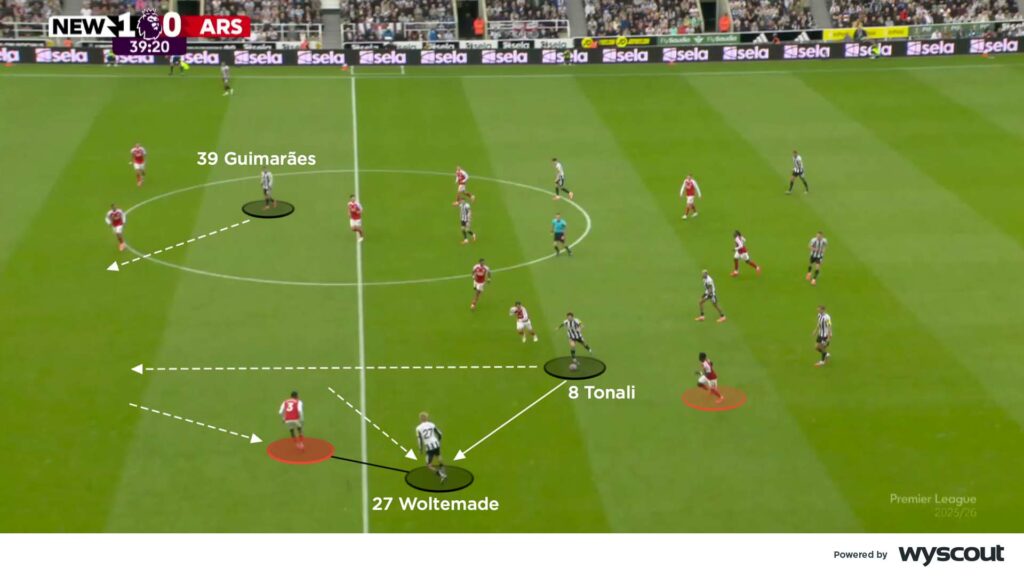
Howe and Arteta’s changes
Arteta brought on William Saliba for Cristhian Mosquera at centre-back at the break, and tweaked Arsenal’s attacking set-up. As the second half progressed, they faced a more consistent Newcastle mid-block. Against this, Arteta’s team initially formed a back three when building play. Calafiori moved high and wide on the left. Trossard moved inside alongside Eze, both working ahead of the double pivot, which remained fixed from the first half. This helped create better passing connections in the centre against Newcastle’s narrow central midfield. Timber then advanced fast and late from the back line, supporting around Saka (below).
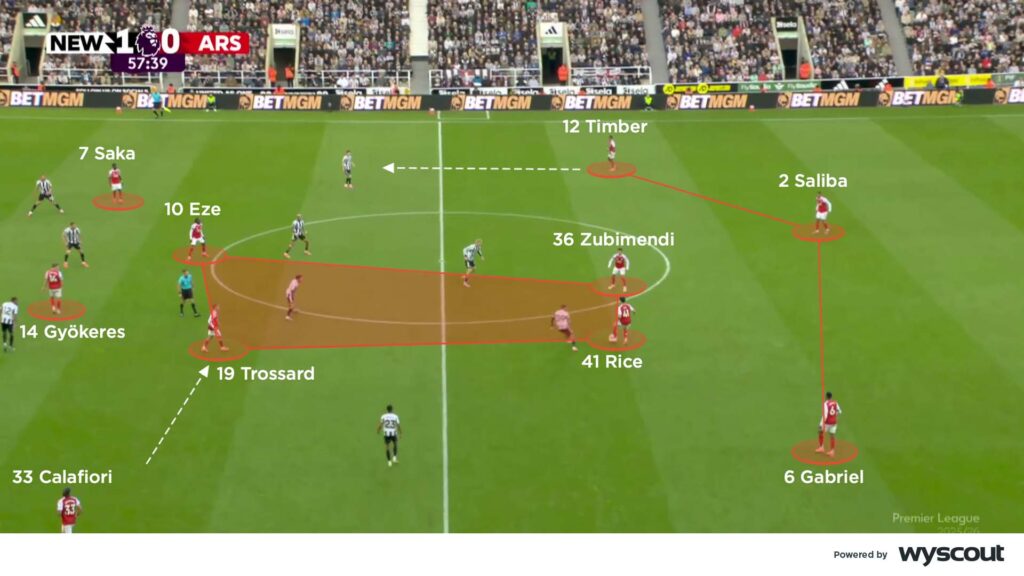
This new attacking shape helped Arsenal dominate the ball and take control of the second half, limiting Newcastle mostly to wide counter-attacks. Arsenal’s right side was very efficient, with Eze sometimes dropping deeper to link, combine and penetrate with incisive forward passing. Saka’s timing of movement inside was also purposeful, allowing Timber to overlap and run in behind as a significant threat. With Arsenal creating problems on their right, closest pivot Martín Zubimendi could remain deep without the need for Rice to stay alongside him for so long. When Trossard committed inwards or high around Gyökeres, Rice made late runs from midfield (below), adding to Arsenal’s attacking presence.
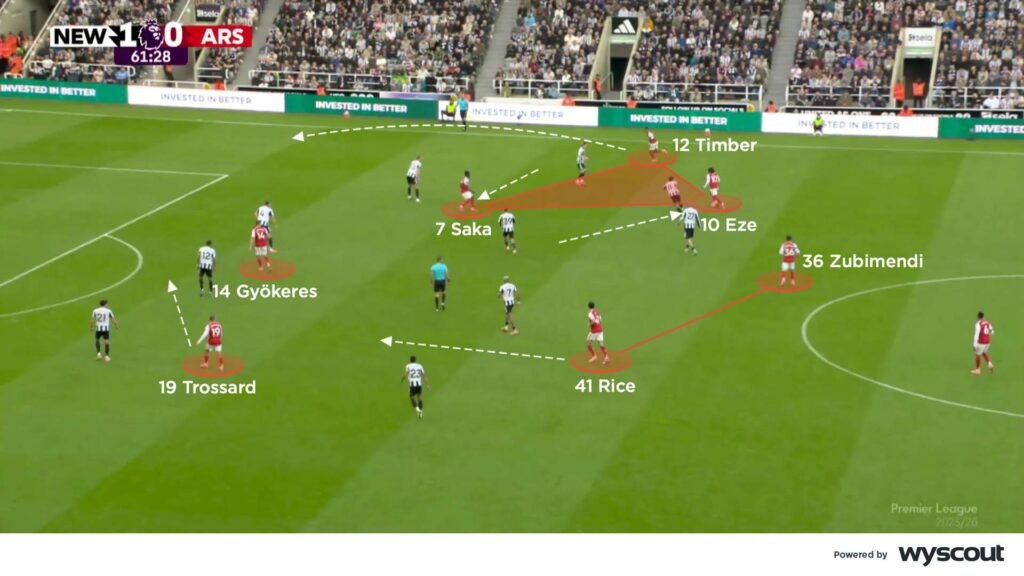
Howe responded to the problems posed by Arsenal’s right side by making a triple change and moving to a back five. Livramento shifted to left wing-back and Burn narrowed into one of the central defensive roles. Joelinton also moved across to protect the left of the midfield unit, as the home side maintained their mid-block. Although this limited their counter-attacking numbers at times, it made it much harder for Arsenal to create wide combinations and overloads. Newcastle’s closest wide and central midfielders shifted across and tried to force play along the line. Their wing-back was then able to support and lock the play without worrying about play back inside, thanks to the extra centre-back. Any attempted switches could then be covered by those on the far side (below).
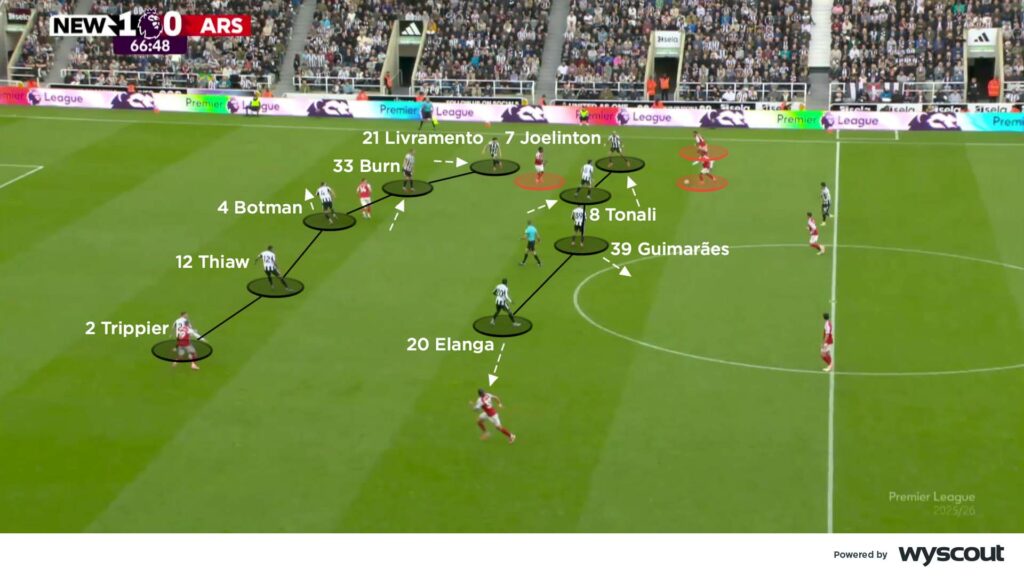
Newcastle’s block was solid, which meant Arsenal needed corner routines to secure victory. With this game – and Crystal Palace’s win over Liverpool – being decided by dead-ball situations, it was more evidence of how set-pieces can make the difference at the top level.
To learn more about football tactics and gain insights from coaches at the top of the game, visit CV Academy



